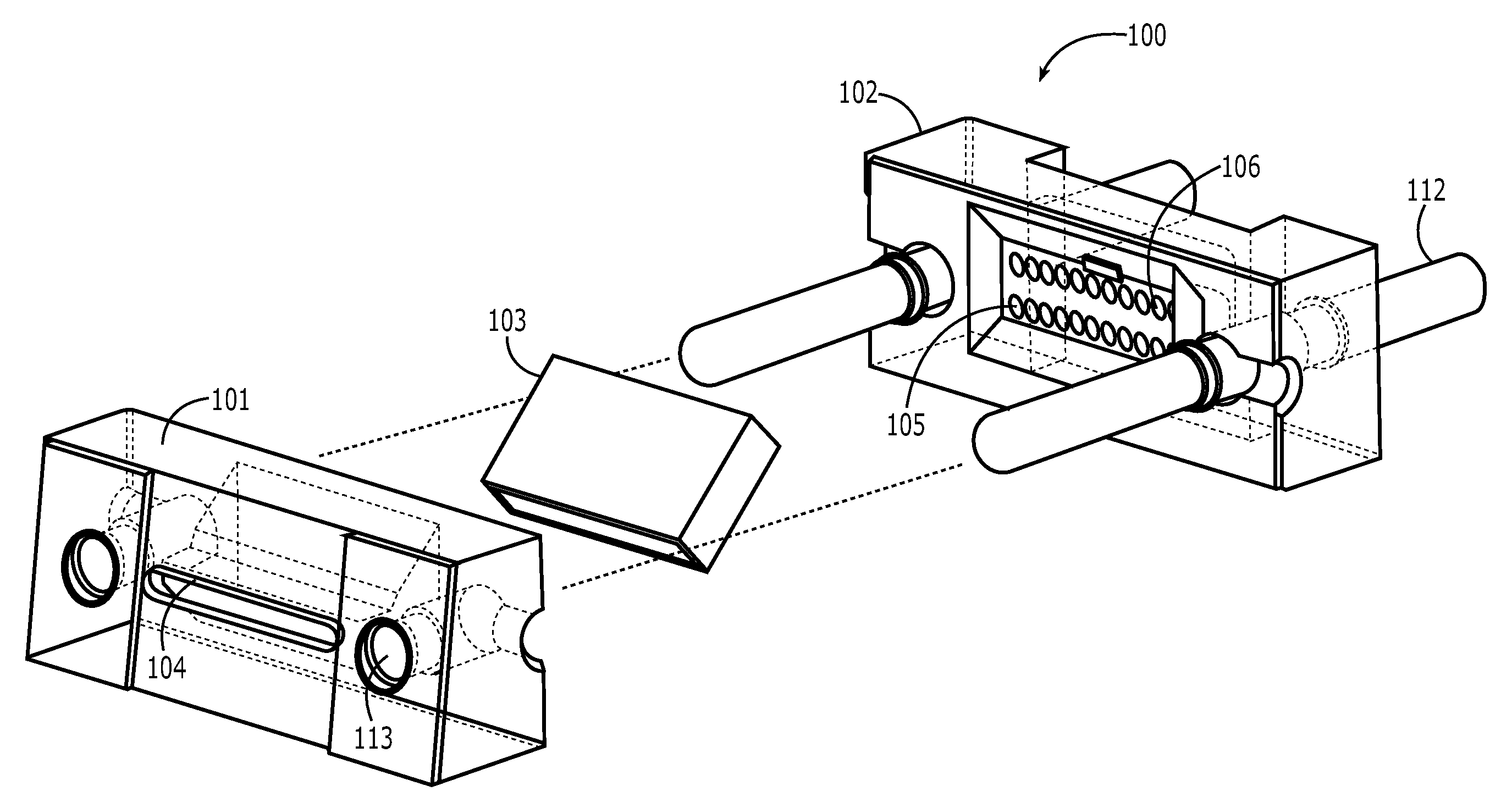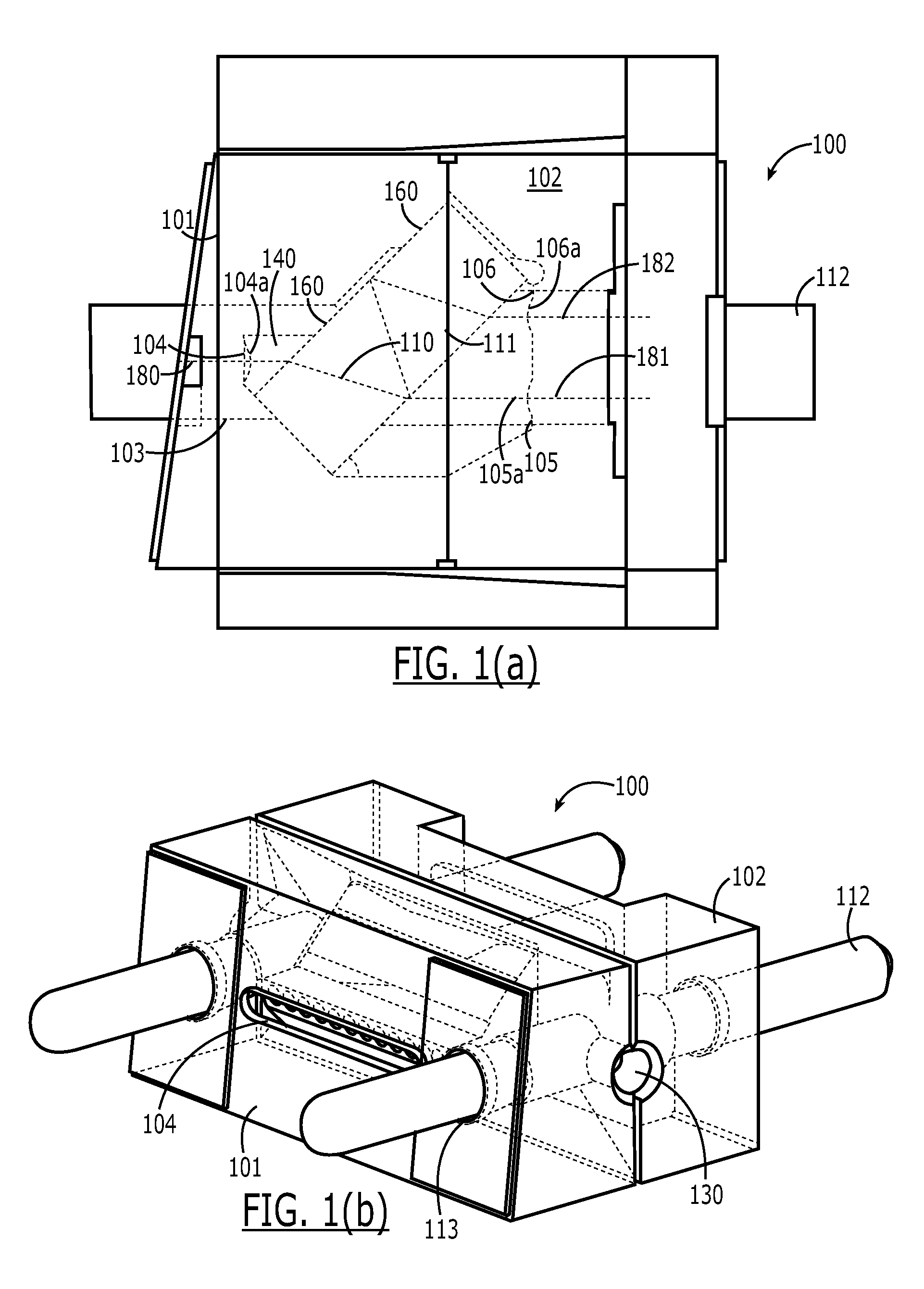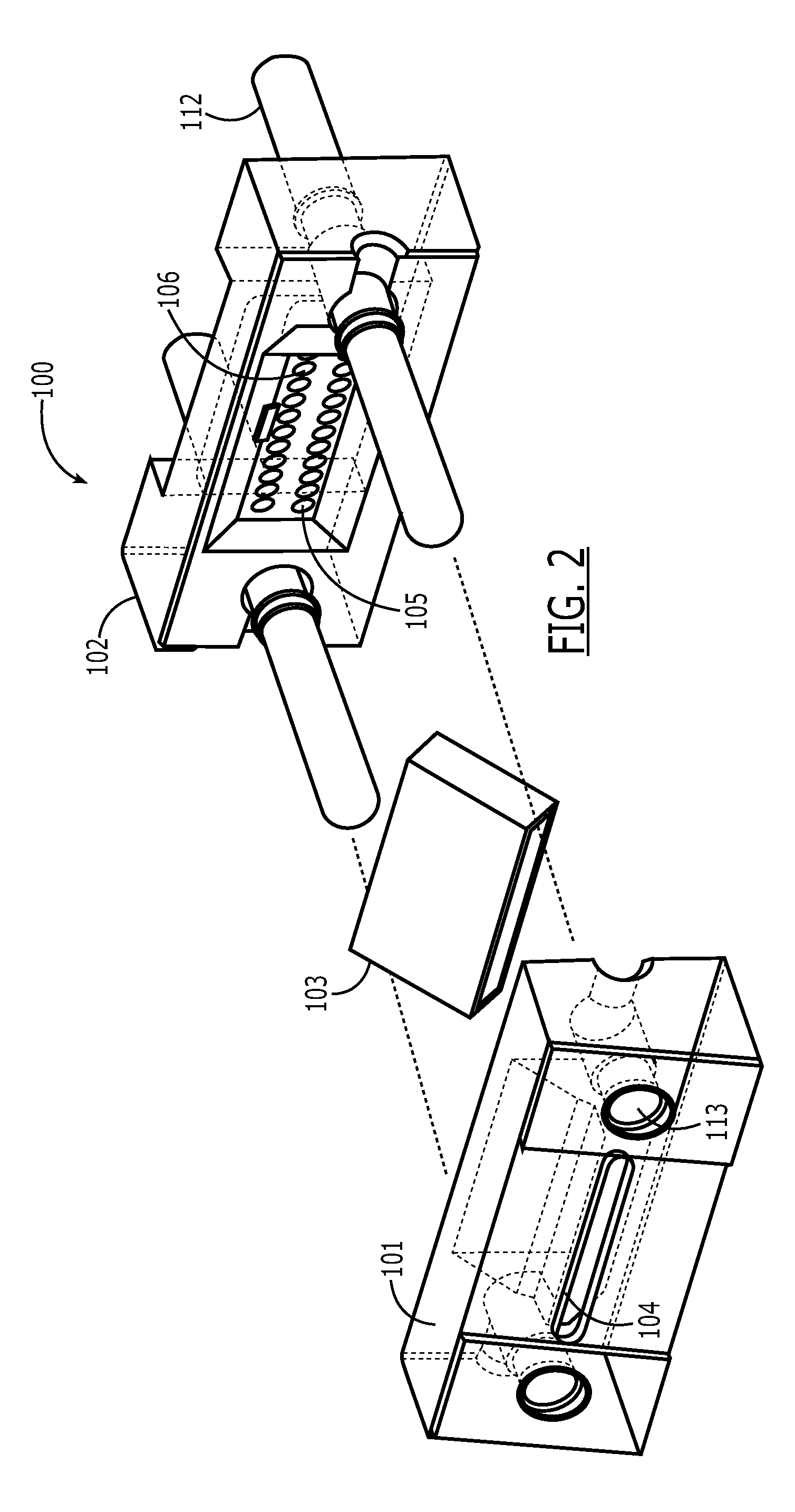Multi-channel transceiver
a transceiver and multi-channel technology, applied in the field of multi-channel transceivers, can solve the problems of reducing power, needing to dissipate heat, and general non-favorable use of such vcsels, and achieves the effects of reducing power consumption, small size, and fewer optical alignment steps
- Summary
- Abstract
- Description
- Claims
- Application Information
AI Technical Summary
Benefits of technology
Problems solved by technology
Method used
Image
Examples
Embodiment Construction
[0022]Referring to FIGS. 1(a), 1(b) and 2, one embodiment of the optical interface 100 of the present invention is shown. As used herein, an optical interface refers to the interface between an optical conductor and one or more optical devices, which are typically, although not necessarily, opto-electric devices (OEDs).
[0023]The optical interface 100 comprises a first portion 101 having at least one optical conduit interface 104 with a first axis 180 for optically coupling with at least one optical conduit (not shown). The optical interface 100 also comprises a second portion 102 having at least one transmitter interface 105 with a second axis 181 for optically coupling with a transmitting optical device (not shown), and at least one receiver interface 106 with a third axis 182 for optically coupling with a receiving optical device (not shown). The first, second and third axes are essentially parallel. Disposed between the first and second portions 101, 102 is a wavelength filter el...
PUM
 Login to View More
Login to View More Abstract
Description
Claims
Application Information
 Login to View More
Login to View More - R&D
- Intellectual Property
- Life Sciences
- Materials
- Tech Scout
- Unparalleled Data Quality
- Higher Quality Content
- 60% Fewer Hallucinations
Browse by: Latest US Patents, China's latest patents, Technical Efficacy Thesaurus, Application Domain, Technology Topic, Popular Technical Reports.
© 2025 PatSnap. All rights reserved.Legal|Privacy policy|Modern Slavery Act Transparency Statement|Sitemap|About US| Contact US: help@patsnap.com



